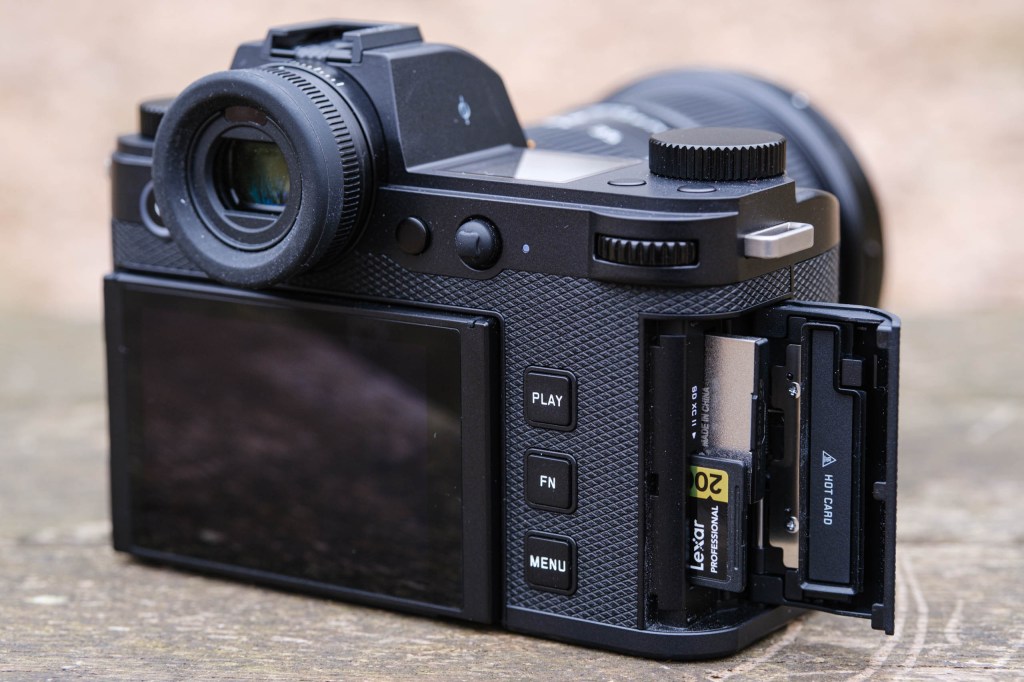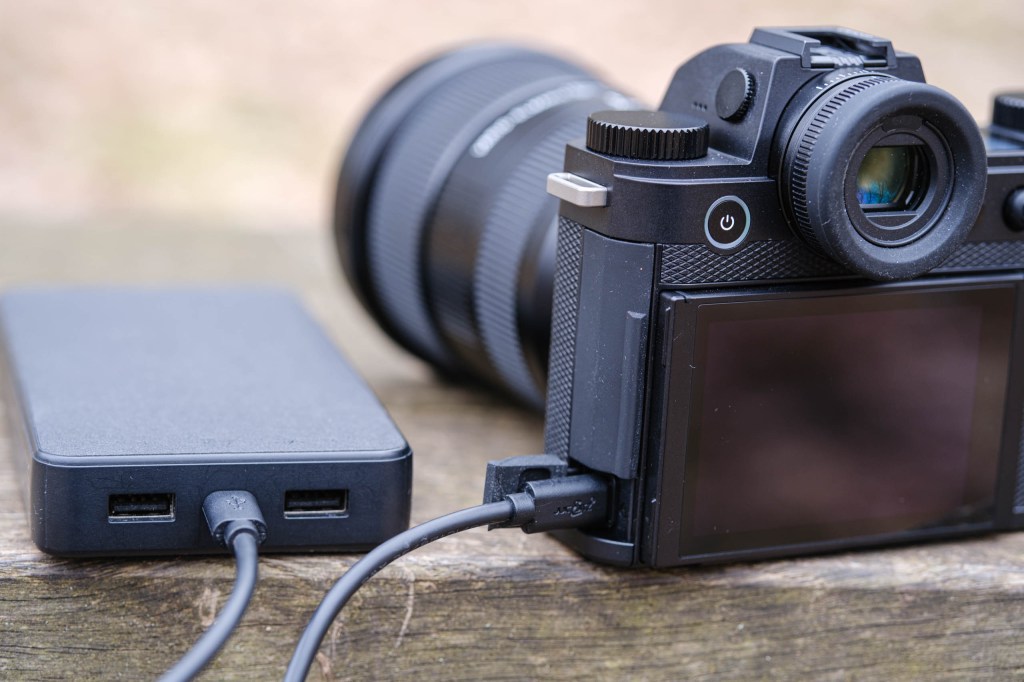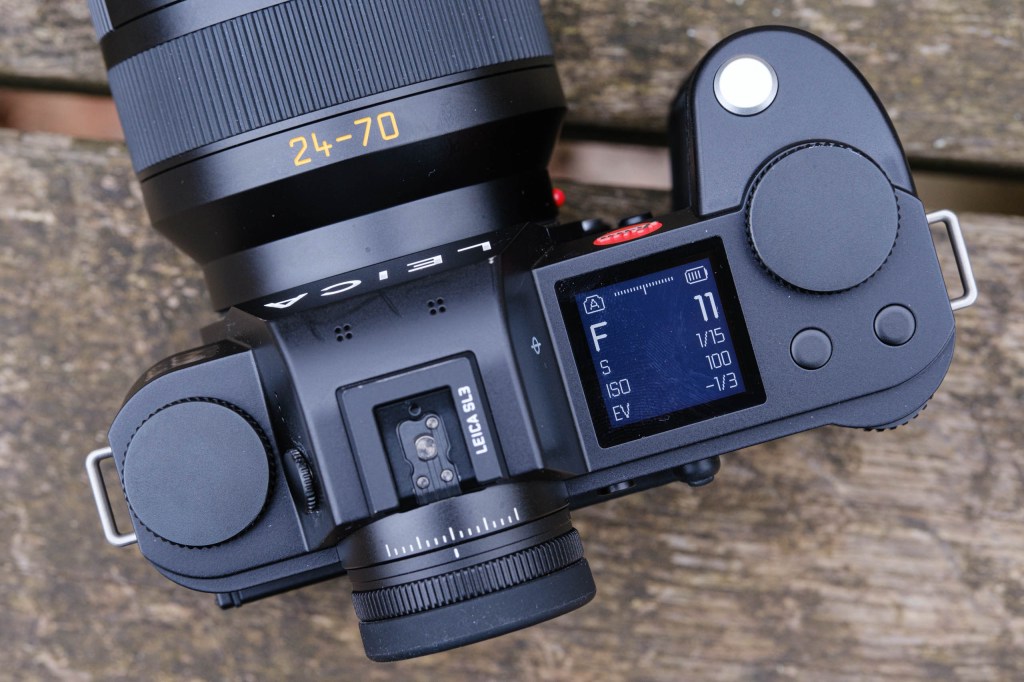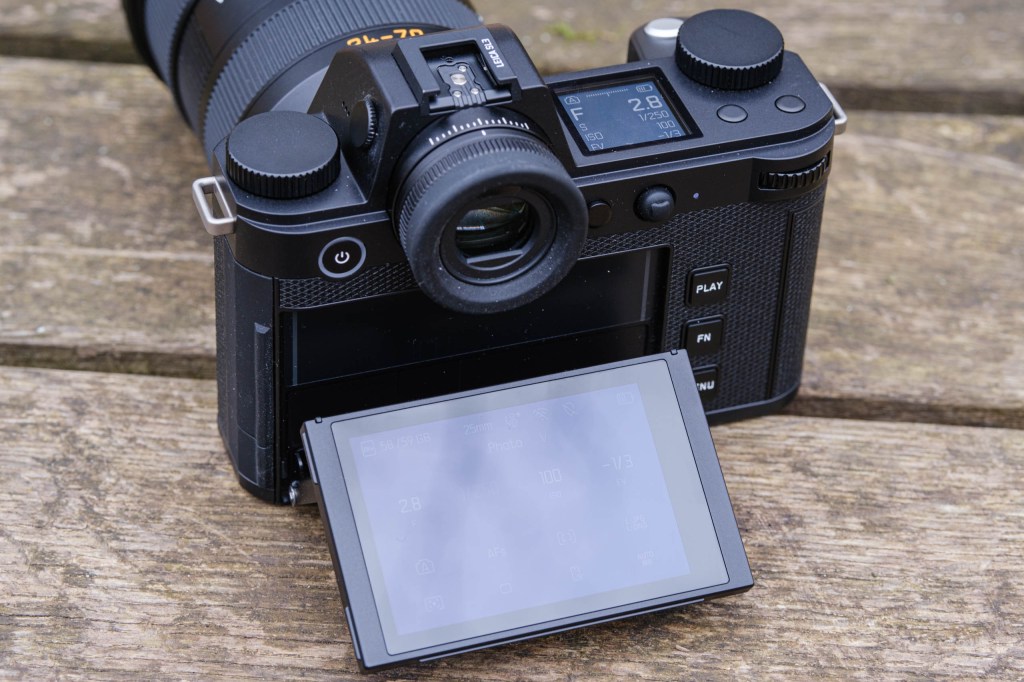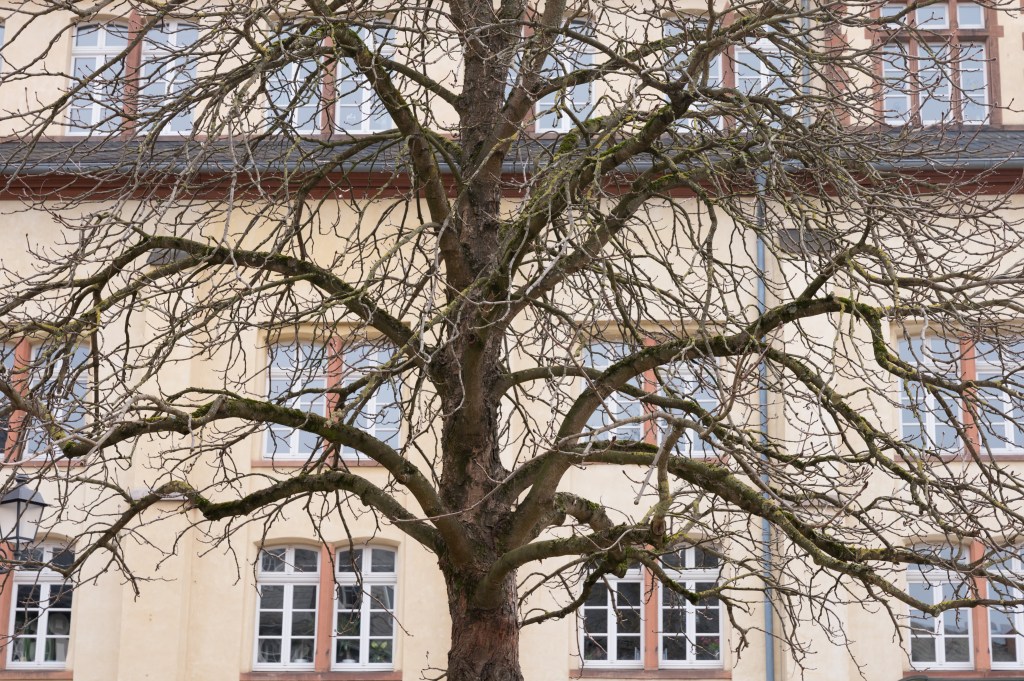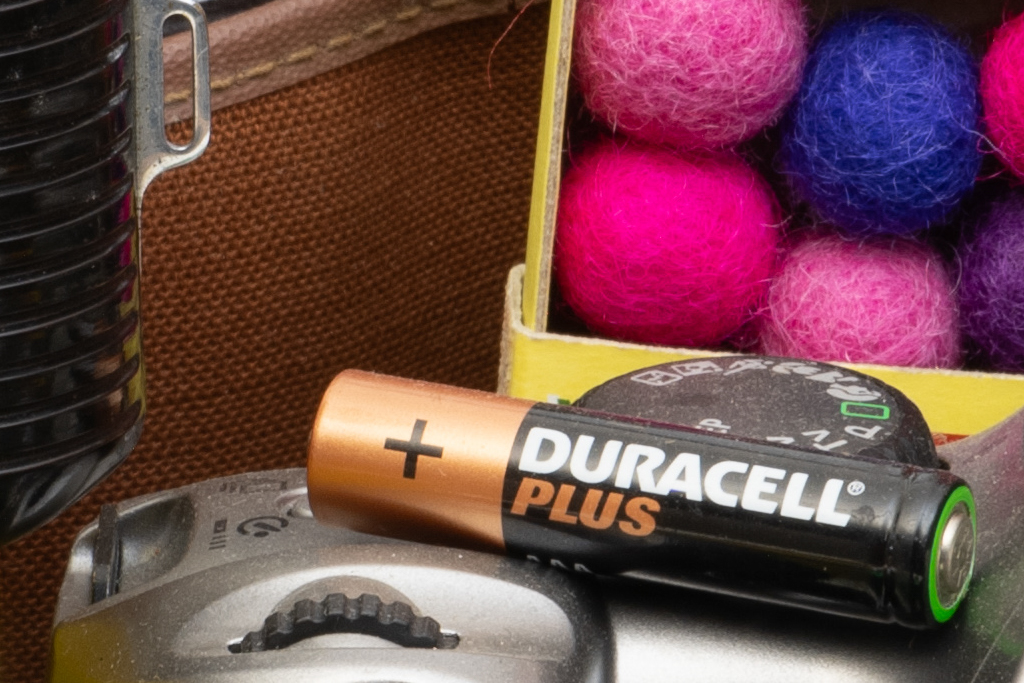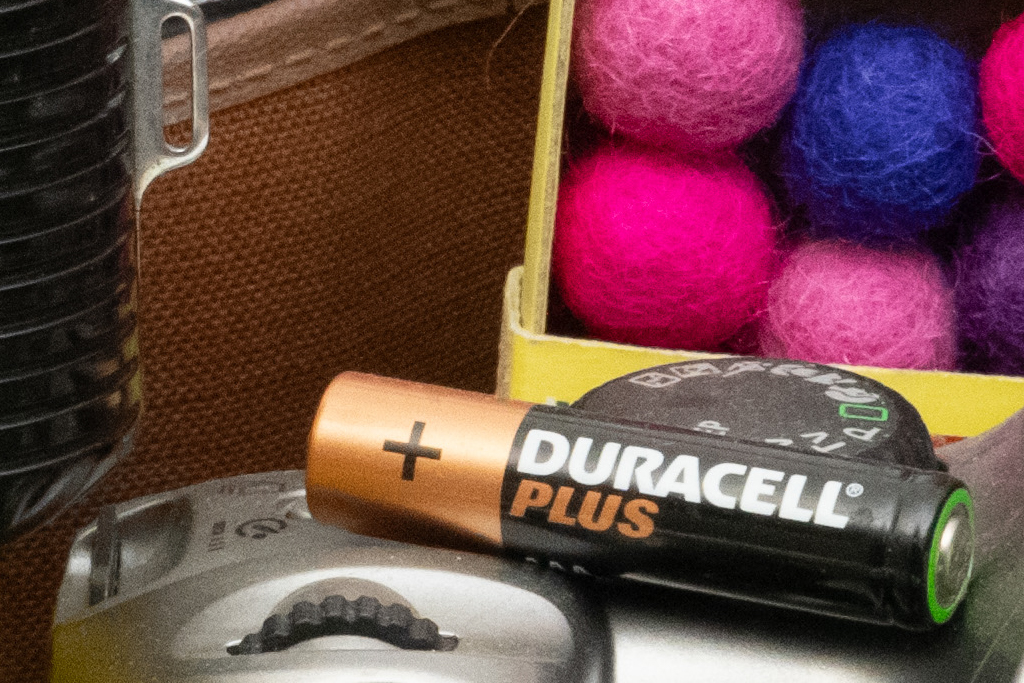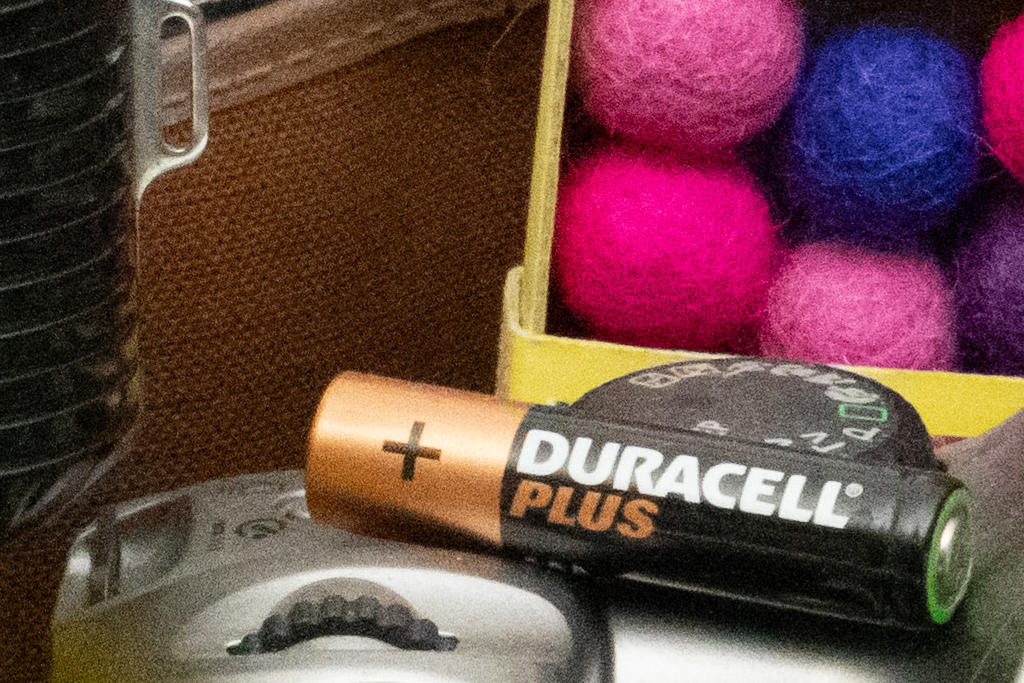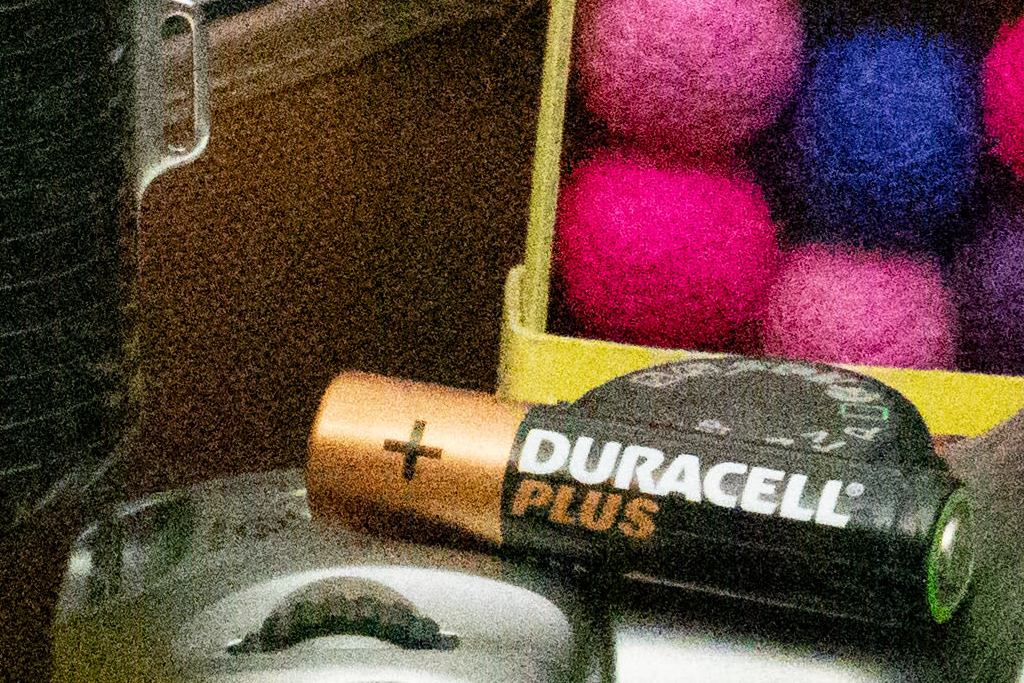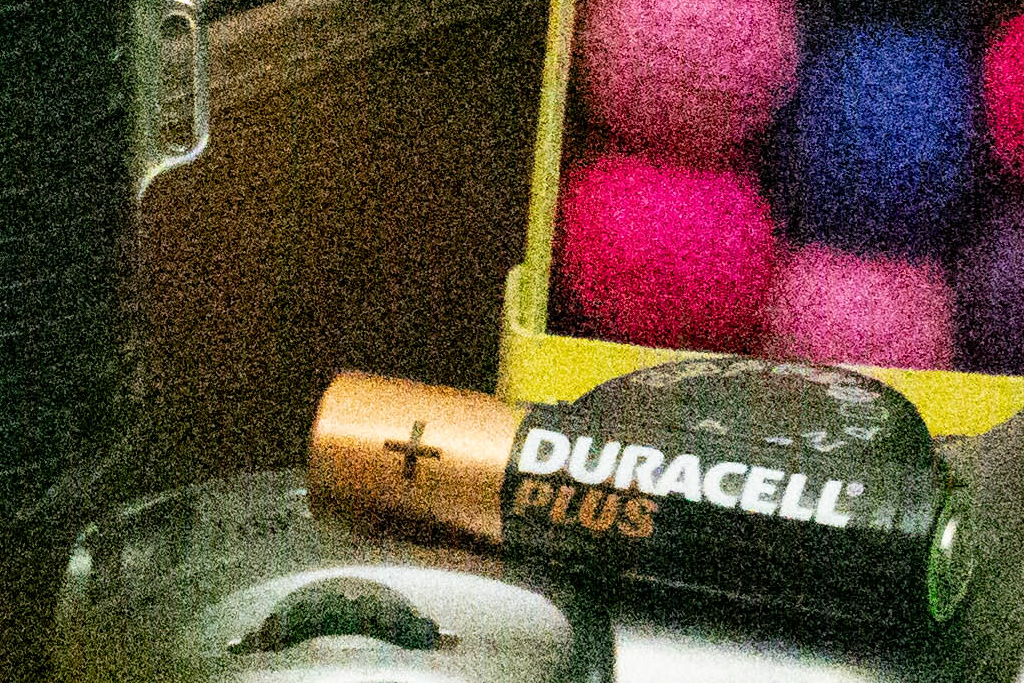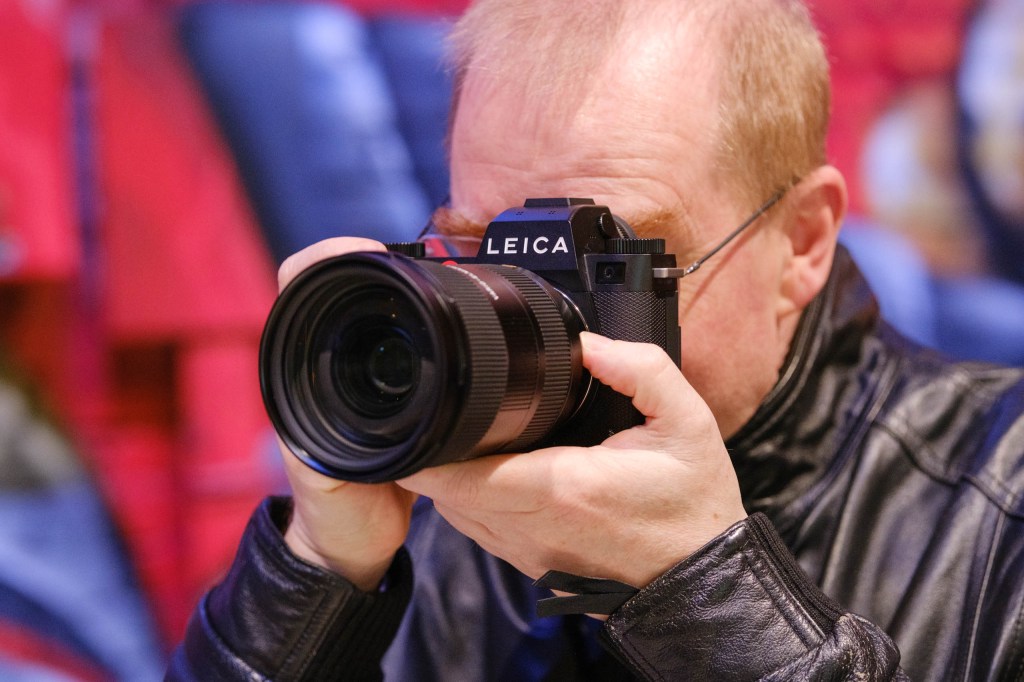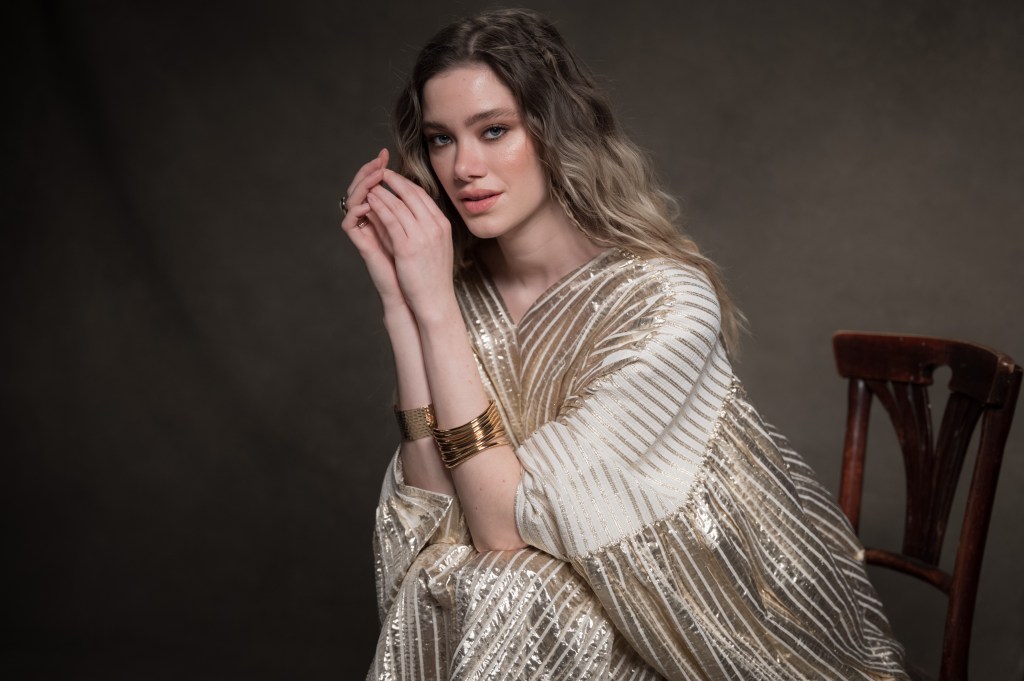Amateur Photographer verdict
Leica’s pro-level full-frame mirrorless model boasts a solid feature set, bomb-proof build quality, and a slick user interface. It’s expensive, but image quality from the 60MP sensor is exemplary.- Superb image quality
- Extremely robust build
- Much improved autofocus
- Clear, straightforward user interface
- Poor battery life
- Some controls are awkwardly positioned
- Screen only tilts up and down
The Leica SL3 is the latest in the firm’s line of pro-spec full-frame mirrorless models, which started with the original 24MP SL back in 2015. This was a camera built unashamedly for professionals, with an exceptionally robust body supported by superb optics. Four years later, the SL2 appeared with a 47MP sensor and more streamlined operation. Now its successor maintains the same philosophy, but gains many of the updates that we saw last year in the lovely Leica Q3 full-frame compact. This makes it one of the best Leica cameras you can buy.
Leica SL3 at a glance:
- $6995 / £5920 body-only
- 60MP full-frame sensor
- ISO 50-100,000 (extended)
- Up to 15 fps continuous shooting (5fps with C-AF)
- 8K 30fps video shooting
- In-body stabilisation, 5 stops
- 5.76m-dot, 0.76x viewfinder
- 3.2in, 2.3m-dot tilt touchscreen
Key updates include a 60MP sensor, 8K video recording, and a tilting, rather than fixed rear screen. Autofocus is also significantly improved, by the addition of both subject recognition and on-sensor phase detection. This brings the SL3 much closer into line with other top-end full-frame mirrorless models, in terms of headline features.
However, at $6995 / £5920 body-only, the Leica SL3 is considerably more expensive than its mainstream competitors. Most obviously, the Sony Alpha A7R V is also built around a 60MP sensor and offers a very similar feature set. Other alternatives include the Canon EOS R5 and Nikon Z 8, and all three of these rivals all be bought for two-thirds of the price. Naturally, these cameras each have their own distinct strengths and weaknesses, but why would you consider paying such a premium for the Leica?
Leica SL3: Features
Let’s take a tour through the Leica SL3’s key features. Like the Q3, it’s built around a 60MP full-frame sensor which incorporates phase detection for autofocus – the first time we’ve seen this on a Leica mirrorless camera. It provides a standard sensitivity range covering ISO 100-100,000, with an ISO 50 option also available at the expense of highlight range.
You don’t have to shoot 60MP files all the time, though. It’s also possible to record both JPEGs and DNG raw files at either 36MP or 18MP, depending on what you need. Leica says that technically, the lower-resolution DNG files are produced by a process of demosaicing, resizing, and remosaicing, which in principle retains all the same processing flexibility as the full-resolution raws.
Continuous shooting is available at up to 5 frames per second with continuous autofocus. With focus fixed and using the silent electronic shutter, this increases to 15 fps. Uniquely, Leica shows unambiguously what you’re getting, in terms of AF and raw bit-depth, at all the shooting rates available.
Timed shutter speeds as slow as 60 minutes are provided, which is great for such things as landscape or astro photography. At the other end of the scale, the fastest speed is 1/8000sec with the mechanical shutter, or 1/16000sec with the electronic shutter.
Thanks to the inclusion of Leica’s latest Maestro IV processor, the SL3 adopts subject recognition autofocus. This borrows from Panasonic technology, thanks to the firms’ L2 alliance, with human and animal detection available. It’s not as sophisticated as the systems on rival cameras, but it’s a big step forward compared to the previous SL2.
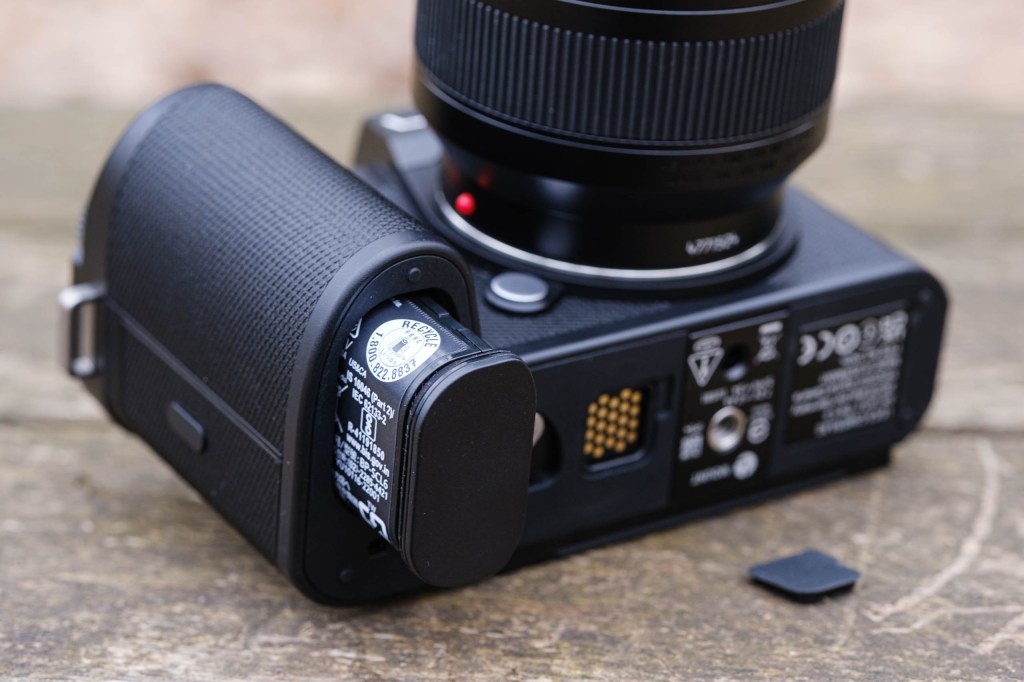
In-body image stabilisation (IBIS) is built in, promising 5 stops of shake suppression. There’s no high-resolution multi-shot mode, but with 60MP already to play with, that’s not much of a loss. Leica hasn’t ruled out adding one via firmware if enough users say they need it.
One feature inherited from the Q3 are ‘Leica Looks’. These are stylised JPEG processing modes, with three colour and three monochrome options available (named Eternal, Contemporary, Classic, Blue, Selenium, and Sepia). They’re certainly more interesting than Leica’s standard colour modes, but unusually, you have to download and install them via the Leica Fotos smartphone app.
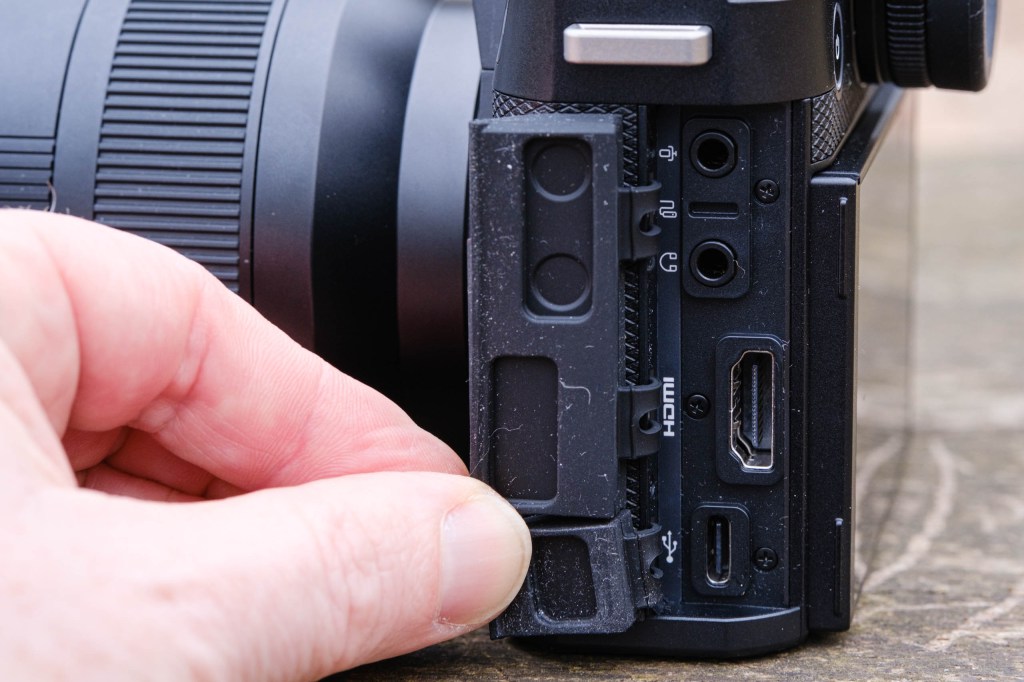
Video can be recorded at 8K and 30fps; 4K / 60fps; or Full HD / 120fps, with an entirely separate video-optimised interface. This can even be switched to a Cinema Mode that works in terms of the T-stops and shutter angles often favoured by experienced videographers, rather than F-stops and shutter speeds. Microphone and headphone sockets are provided, alongside full-size HDMI video output and USB-C for charging.
Both Bluetooth and high-speed Wi-Fi are on board for wireless connectivity via the Leica Fotos app. A 60MP DNG raw file can be copied to across to your smartphone in as little as 2 seconds, for processing in programs such as Lightroom Mobile. This goes a long way to offsetting the lack of any in-camera raw conversion. It’s also possible to use your phone as a remote control, complete with a live view feed and the ability to change wide range of camera settings.
With an iPhone, you can also use a wired connection via a USB-C or Lightning cable for both image transfer and remote control. This is quicker to set up and allows even faster file transfers. In real-world use, it’s much less frustrating than hanging around waiting for your camera and phone to establish a Wi-Fi connection. I wish all cameras worked this way.
Leica SL3 key features:
While it resembles Leica’s previous full-frame modes, the SL3 represents a distinct evolution in design
- Tilt screen: The 3in, 2.1m-dot touchscreen tilts up and down, but there’s no additional hinge for portrait-format shooting.
- Storage: Leica has included two card slots, one for CFexpress Type B and the other for UHS-II SD. They can be used either simultaneously or sequentially, or you can record raw to CFe and JPEG to SD.
- Power: The BP-SCL6 battery is rated for just 260 shots by CIPA standard tests. It can be recharged in-camera via the USB-C port.
- Connectors: On the left side, beneath chunky rubber covers, you’ll find USB-C, full-size HDMI, and 3.5mm stereo microphone and headphone ports. The latter two are both compatible with Leica’s RC-SCL6 cable release (£90).
- Top screen: A top-plate LCD display shows your key settings at a glance, including exposure mode, shutter speed, aperture, ISO, and exposure compensation.
- L-mount: There’s now a good range of designed-for-mirrorless full-frame L-mount autofocus lenses: 15 from Leica, 16 from Panasonic, and 29 from Sigma.
- Vertical grip: The optional HG-SCL7 vertical handgrip screws onto the base of the camera. It provides a replicate set of controls for portrait-format shooting and accommodates a second battery for extended shooting.

Leica SL3: Build and handling
Like its predecessors, the SL3 uses a chunky SLR-shaped body that feels exceptionally robust, with an IP54 rating indicating protection against dust and water sprayed from any direction. It’s slimmed down slightly compared to the SL2, but still pretty hefty, at 141.2 x 108.1 x 84.6mm and 850g. The handgrip isn’t as sculpted as those on its competitors, but it’s still reasonably comfortable to hold.

Leica’s design philosophy is distinctly different to other brands. Pro-spec cameras are usually covered with dials and buttons, but the SL3 is strikingly simpler and more pared back. Rather than having dedicated controls for every setting, programmable buttons dotted around the body can be configured to suit the user’s needs.
You can then use these custom buttons in concert with multiple User Profiles. These can store suitable combinations of settings and custom button assignments for different purposes, and crucially, be given meaningful names for easy recall. If you take the time to set them up, it’s a really quick and easy way to switch the camera between different setups for such things as portraits, moving subjects, or using manual-focus lenses.
While the SL3 looks similar to previous models in the line, it comes with some significant design updates. The most obvious is the addition of a large dial on the top left to change the ISO. This joins two others placed under your right forefinger and thumb that are used for setting shutter speed, aperture, and exposure compensation.
However, while this extra dial is certainly nice to have, it’s not very conveniently placed, as you have to shift your left hand from underneath the lens every time you want to make an adjustment.
Spinning the ISO dial past its lowest (ISO 50) setting brings up the option to switch to Auto ISO, which is done using either the joystick or rear dial. You can change back to manual ISO setting in a similar way. This is neat, as it minimises the risk of you switching into or out of Auto ISO accidentally.
Another significant change is found on the back, with the screen now capable of tilting up and down for high and low-angle shooting. As a result, the column of three buttons (Play, Fn, and Menu) that was previously on its left side has moved across to the right, which places them much more conveniently under the control of your right thumb. There’s no conventional mode dial; instead, clicking the rear dial inwards allows you to change between the usual PASM quartet.
Where the SL2 had a conventional power switch, there’s now a push-button control, with a glowing ring around its edge to indicate the camera’s status. This is white in normal use, lights up red to highlight an error (for example, when you don’t have a memory card installed), flashes green during charging, and then goes green when the battery is fully charged. It counts as a real improvement over the tiny and sometimes difficult to see charging LEDs used by other brands.

Both the main dials and the AF joystick fall nicely to hand while you’re shooting. One irritation, though, is that you can’t quickly re-centre the focus point by clicking the joystick inwards, as you can on many cameras; instead you have to program and use a separate custom button.
Also, while pressing the joystick activates AF, it then locks the focus. There doesn’t appear to be a way of using it (or indeed any other function button) like a regular AF-ON button to operate continuous AF. So this isn’t a camera for fans of back-button focusing techniques.

I’m not entirely convinced by the positioning of all the function buttons, either. The two on the front are easy enough to reach, while the one beside the viewfinder required a slight stretch of my right thumb to operate. But the other two are placed behind the top control dial, which means they can only be operated with a significant shift in your grip on the camera.
Leica has clearly spent a lot of time refining the onscreen user interface to make it clearer and easier to use, especially via the touchscreen. Touch points are more spaced out, and the onscreen icons have been redesigned for greater clarity. In a particularly neat touch, pressing briefly on any of the onscreen status icons allows you to change the setting it represents. I found this to be even quicker and more convenient than a conventional Q menu.
As usual, the firm has kept the camera’s menus as sparse as possible, rather than swamping you with incomprehensible options. Yet despite having a fraction of the settings as the likes of the Sony A7R V, I never really felt anything major was missing. The overall result is one of the most elegant and streamlined interfaces I’ve had the pleasure of using.
Leica SL3: Viewfinder and screen
Leica has fitted the SL3 with an excellent electronic viewfinder, with 5.76m-dot resolution and 0.76x magnification. While this is notionally a small step back from the SL2’s 0.78x magnification, and considerably smaller than the Sony A7R V’s 9.44m-dot, 0.9x unit, it’s still bright, detailed, and clear all the way into the corners. Detailed exposure information is overlaid on black bars above and below the preview image, and the entire interface now rotates when you turn the camera through 90° for portrait format shooting, which is always a nice touch.
Likewise, the screen is also very good indeed, measuring 3.2in diagonally and boasting 2.3m-dot resolution. But while it’s welcome to see Leica finally adopt a tilting mechanism (which feels extremely robust), it’s a shame you don’t get a third hinge for portrait-format shooting, like on the Nikon Z8. This limits its usefulness to shooting in landscape format only, which now feels distinctly out of date.
Leica previews colour and white balance, along with exposure over a +/-3EV range. In the SL3’s default setup, there’s no depth-of-field preview at all, but you can assign this to a custom button – I used one the two on the front of the body. Unusually, a second press of the same button will preview any blurring effect of the shutter speed, which can be very useful for visualising long exposures.
There’s a good set of exposure and compositional aids on offer, including gridlines, a live histogram, electronic levels, focus peaking, and blinking highlights to warn of possible clipping. Helpfully, you can define four ‘Info Profiles’ with any combinations of these you choose, and then cycle through them using the FN button on the back of the camera. This is much more user friendly than the Sony A7R V, where you don’t have much choice about how configure different information views.
Leica SL3: Autofocus
If there’s one area where Leica has clearly benefited from its L2 technology partnership with Panasonic, it’s autofocus. The firm’s previous mirrorless models relied on contrast detection AF, which works very well for static subjects. But like both the Leica Q3 and Panasonic’s Lumix S5II and G9II mirrorless models, the SL3 gains on-sensor phase detection, which transforms its ability to follow those that move.
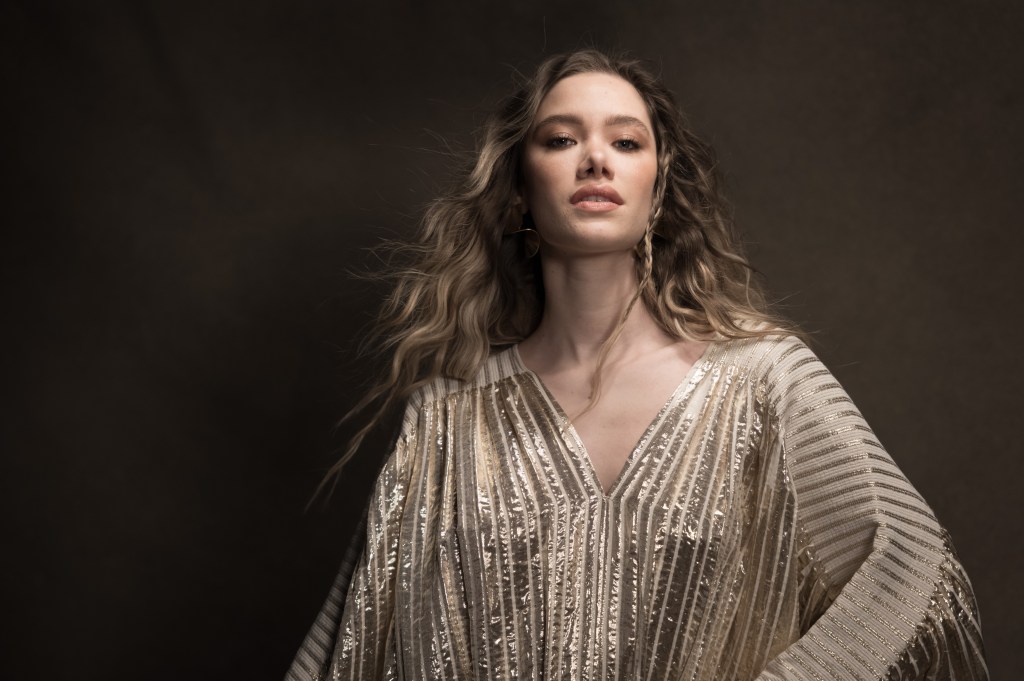
Click on any sample image to see the full resolution version
You also get a limited degree of subject detection, with the camera able to recognise and track people much more effectively than before. Animal detection is also available, but still labelled ‘Beta’ in the latest firmware available at the time of writing (1.1.0). In contrast, cameras like the Sony A7R V and Nikon Z8 can reliably recognise a much wider range of subjects, such as birds, insects, and vehicles.
Subject detection is selected from the same sub-menu as the various AF area options (multi-field, spot, field, and zone) and the conventional tracking mode. I found this makes a lot of sense in terms of usability, as it means you can access them all using a single custom button. When the camera recognises a subject, it’ll be outlined in green, with alternative options shown in yellow. You can then select between them using the joystick.
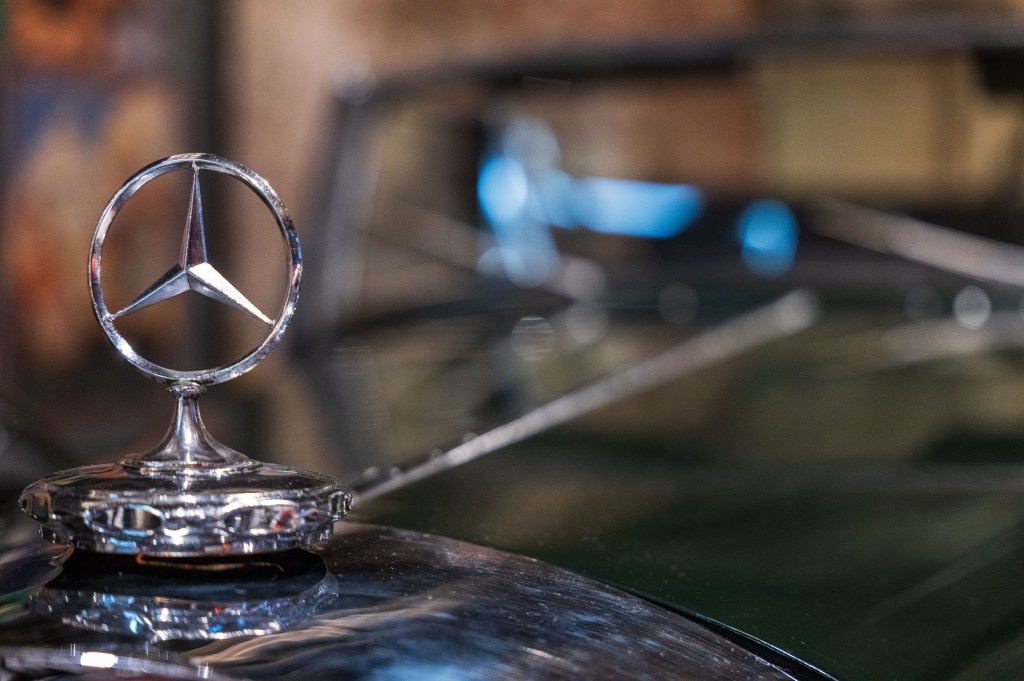
The subject detection does a good job of keeping track of your model’s face and eyes, although it’s visibly not as smooth and ‘sticky’ compared to the best systems around. In real-world shooting, though, I found it worked very well for portraits, where your subject is likely to be moving and changing pose, but not especially fast. I’m not sure I’d trust it so much for sports or action – but here you’d do best to buy a faster camera with a stacked sensor anyway – most obviously the Nikon Z8.
Leica SL3: Use with manual lenses
Leica has specifically designed the SL3 to work well with both its M-mount rangefinder lenses, and legacy R-mount DSLR lenses. Using Leica’s own mount adapters, the camera can recognise the lens in use and configure the image processing and IBIS accordingly. There’s an external light meter built into the body, just like on the firm’s M-series rangefinders, which allows the camera to estimate the set aperture and include it in the EXIF data. You can also configure an alternative control setup to make better use of the rear dial that normally controls the aperture.

The camera also plays relatively nicely with other manual lenses via ‘dumb’ adapters. However, if you want to get the IBIS to work, you’ll need to set the focal length via the Lens Profiles menu – otherwise it’ll be disabled. The easiest way to do this is by configuring a function button, perhaps within a specific User Profile for manual lenses.
Leica SL3: Performance
On the whole, the Leica SL3 is every bit as polished and snappy in everyday use as you’d expect for a camera at this level. It responds instantly to both the physical controls and the touchscreen, and once you’ve got used to how it works, it never gets in the way of you shooting.

The Leica SL3 does take a couple of moments to fire up from a cold start, but then after auto power-off, it wakes up instantly on a half-press of the shutter button. So if you want to avoid missing a shot, the best approach is to let the camera drop into sleep mode, rather than turning it off using the power button.
Like most current models, it’s also pretty quiet. The shutter sound is soft and discreet, which means it shouldn’t attract unwanted attention. It can be completely silent in electronic shutter mode, but using this requires care, as it’s susceptible to rolling shutter distortion if the camera or subject is moving.
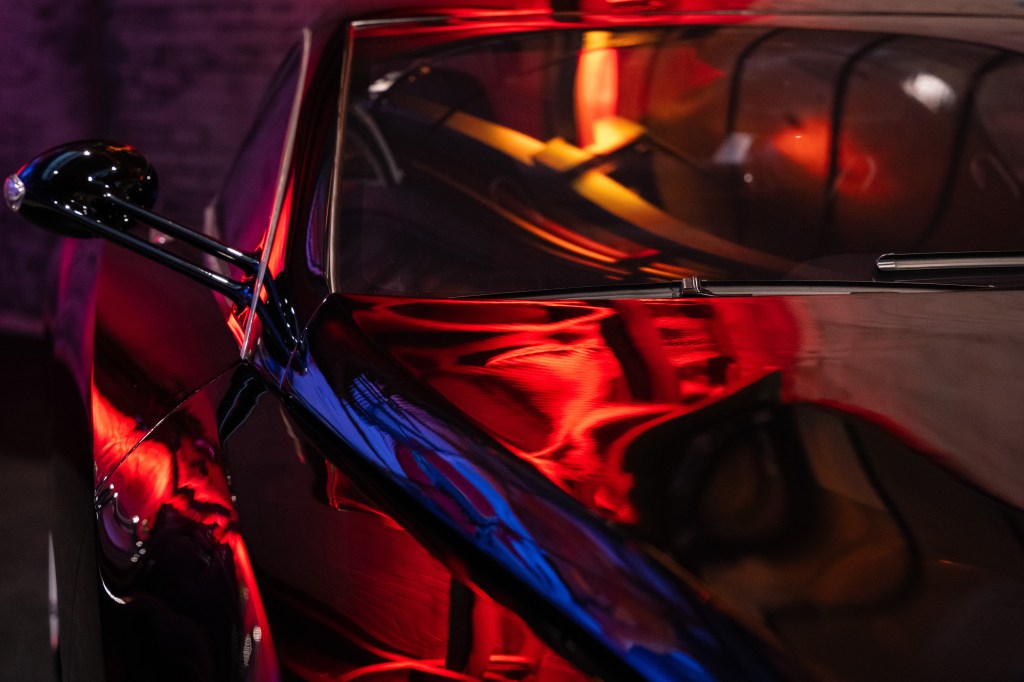
Probably the SL3’s biggest weakness is its battery life. Its BP-SCL6 is rated for just 260 shots per charge according to CIPA-standard tests, which is about half what you’d expect from rival cameras. This was reflected in my time using the camera – the battery drains very quickly indeed. You’ll need to pick up a spare or two, and they’re not cheap, at $200 / £150 a pop.
Continuous shooting
When it comes to continuous shooting, the story is slightly complicated. The headline 15fps speed is certainly impressive, and it comes with a respectable buffer of more than 60 frames when shooting in raw. But disconcertingly, the camera doesn’t provide any visual feedback in the viewfinder to confirm that it’s shooting – other brands employ a flickering frame.
That top shooting rate also requires the electronic shutter, so again, you can get visible rolling shutter distortion. Focus is fixed, too, meaning it’s more practical for capturing fleeting expressions when shooting portraits than it is for sports and action.
The SL3 also takes quite a long time to clear its buffer when it’s full. Even using a high-speed CFexpress Type B card, write times from a full 15fps burst approached one minute in my tests. If you use a UHS-II SD card, they’re only about 15 seconds longer. This suggests that the camera’s processing speed is the limiting factor.
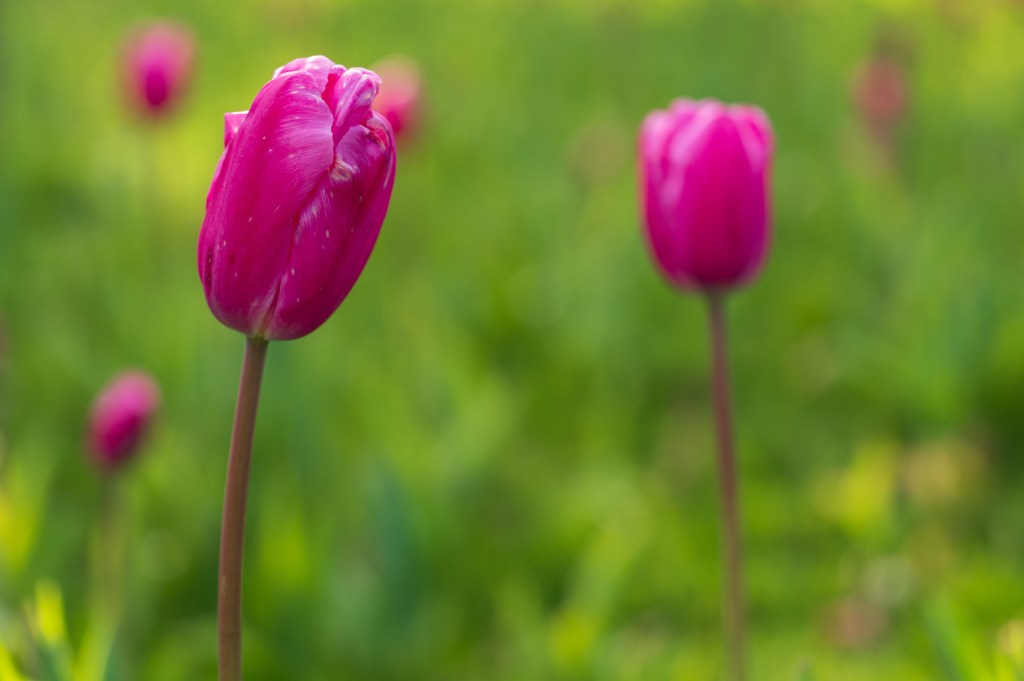
If you want continuous autofocus while shooting, you’ll have to drop the speed down to 5fps, with the buffer extending to 80 frames in return. In comparison, the Sony A7R V can go twice as fast, while the Nikon Z 8 manages fully 20fps at 45.7MP. So if you’re specifically after high speed shooting at high resolution, either of those cameras would be a better choice.
In truth, the SL3 isn’t really a sports / action camera, and instead is best suited to such things as studio, landscape or portrait shooting.
Metering, white balance, and colour
Metering is generally dependable, and it’s very easy to see in the viewfinder when you may need to dial in some exposure compensation to brighten or darken your image. Auto white balance is pretty reliable too, although it can err too much towards over-neutralisation for my tastes, especially in overcast conditions. I usually preferred to warm things up in raw processing.

Leica’s in-camera colour processing is decidedly neutral, especially in its standard colour mode. You can get punchier colours by switching to Vivid, which I preferred for general shooting, while the Natural mode can deliver really nice results for portraits. I also particularly like the Monochrome High Contrast setting.

The various Leica Looks are also well worth a try. They’re very much in line with the current fashion for ‘Film Simulations’, with the colour ones boosting the contrast and tweaking the tint and saturation for more stylised results. For example, ‘Eternal’ gives a very contrasty, saturated look, that may just possibly be inspired by Fujichrome Velvia. Meanwhile, the monochrome looks bring relatively subtle and tasteful toning options.
Raw image quality
Overall, though, this isn’t a camera I’d particularly choose for shooting JPEGs – instead, you’ll definitely get the most from it shooting and processing raw files. We’ve seen this 60MP full-frame sensor before, of course, not just in the Leica M11 and Q3, but also in the Sigma fp L and Sony A7CR, A7R V and A7R IV. As in those cameras, it’s capable of turning out exquisite image quality that can only be surpassed by medium format cameras.
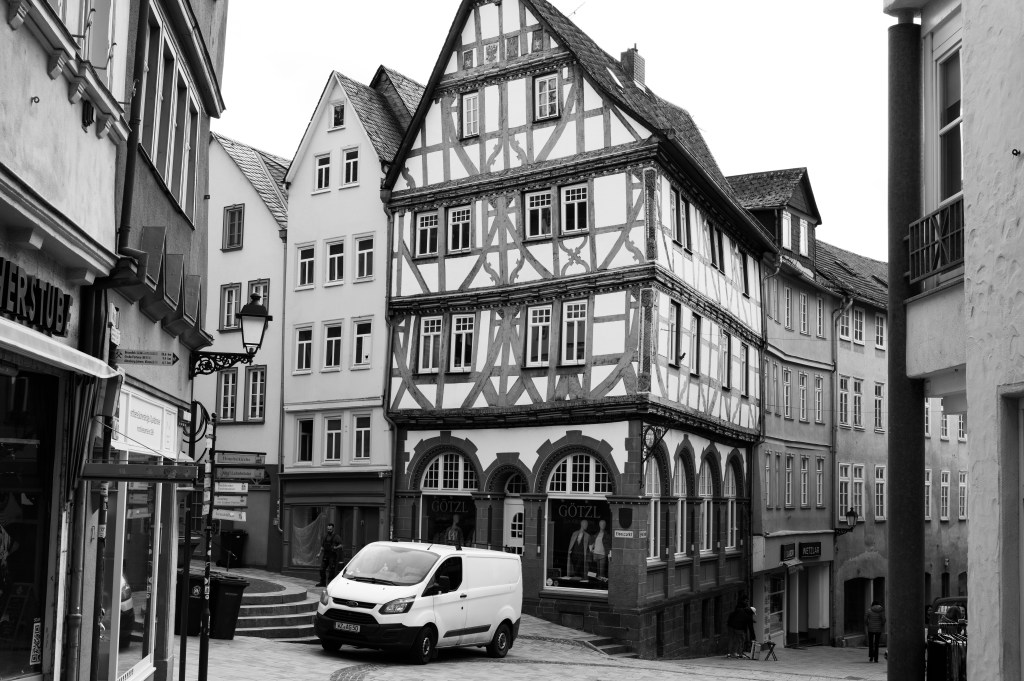
At low ISOs, it delivers exceptional levels of detail and huge dynamic range. You can easily expect to recover four or five stops of detail in shadow regions of the image, which is great for high-contrast subjects such as landscapes. Meanwhile noise is kept well under control at settings up to ISO 12,500 at least.
It’s worth noting, though, that Adobe software (Lightroom and Camera Raw) gives a particularly neutral start point when processing the SL3’s DNG files. So perhaps more so than usual, it pays to play with all the adjustment sliders to get more attractive results. I habitually boosted the contrast, warmth, vibrance, saturation and clarity more than I would with other cameras.

As on the M11 and Q3, it’s nice to have the ability to shoot raw files at 36.4MP and 18.5MP resolutions in situations where you know you won’t be making massive prints. I couldn’t see any obvious image-quality penalty for doing so, either. You get exactly the same flexibility to adjust all the development settings, and there’s no sign of any imaging artefacts from the downsampling process, either.
Leica SL3: ISO and noise
With its 60MP sensor, the SL3 can match any other full-frame camera on the market in terms of detail. Not only does it give really excellent results at ISO 100, there’s barely any drop in quality at ISO 800, even when viewing files close-up onscreen. Fine detail starts to blur away at ISO 1600, and noise has an ever-increasing impact as you increase the sensitivity further.
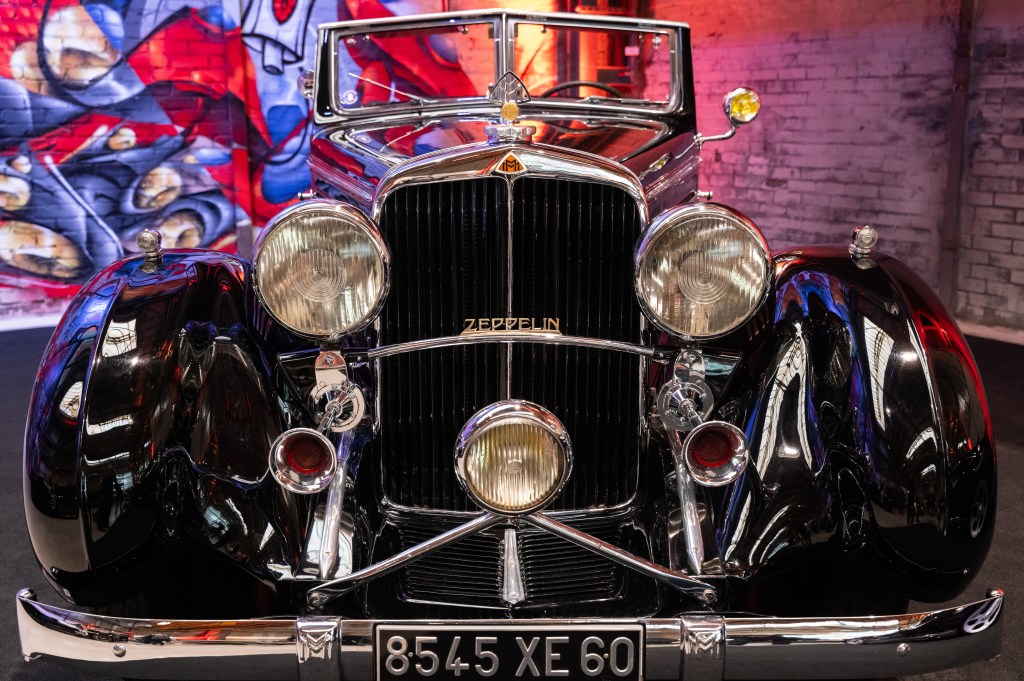
There’s a noticeable increase in shadow noise by ISO 25,000, but even so, I’d be happy using this if the situation required, especially given the capabilities of the latest AI noise reduction software. However I’d avoid using the higher ISO settings.
Below are 100% crops from our standard studio test scene, shot in raw and processed using Adobe Camera Raw at default settings. Click on any thumbnail to see the full-size image.
Leica SL3: Our Verdict
After a couple of weeks using the Leica SL3, it’s clear that this camera is much more competitive with its mainstream rivals than its predecessors were. In particular, the addition of phase detection and subject recognition for autofocus substantially boosts its ability to deal with moving subjects, especially for portraits. It’s also nice to see Leica adding a tilting screen, although the fact it’s limited to landscape-format shooting still leaves it feeling a few years out of date.
With its 60MP sensor, the SL3 can also match any other full-frame camera in terms of image quality. Indeed, it surpasses all but a very select few. It’s nice to have the ability to shoot in raw at reduced resolutions too, so you don’t have to record huge 60MP files all the time.
Rationally, though, the big problem facing the SL3 is that the Sony Alpha A7R V can do essentially all the same things while delivering equally fine image quality, for rather less money. Leica would probably highlight the sheer quality of its lenses as a differentiating factor, but Sony’s top-end GM optics are also superb. And while there’s now a good range of lenses available for L-mount, the choice is even wider in E-mount. Alternatively, if you want a camera that’s tilted more towards shooting high-speed action, the Nikon Z8 is difficult to beat.
However, there’s still a real case to be made for the SL3 in terms of its sheer build quality and its relatively approachable interface. Having previously shot with an SL2 for several hours in a sustained downpour, I’d certainly trust the camera’s ability to survive whatever weather you can throw at it. The SL3 also provides a more pleasant shooting experience than the A7R V, which can be frustratingly over-complicated at times.
You can’t simply dismiss the value of the brand name, either. For some photographers, the cachet of turning up to a job or event with a Leica will itself be worth the premium. Those who own other recent Leica cameras will also appreciate the consistency of operation and compatibility with M and R-mount lenses. Most importantly, it won’t disappoint you with the images it delivers.

Follow AP on Facebook, Twitter, Instagram, YouTube and TikTok.
Read our Leica SL3 interview with Stefan Daniel of Leica
Leica SL3: Full Specifications
| Price | £5920 body-only |
| Sensor | 60.3MP BSI-CMOS, 36 x 24mm |
| Output size | 9520 x 6336; 7393 x 4928; 5280 x 3508 |
| Focal length mag | 1x |
| Lens mount | L mount |
| Shutter speeds | 60min – 1/8000sec (mechanical), 60sec – 1/16000sec (electronic) |
| Sensitivity | ISO 100-100,000 (standard), 50-100,000 (extended) |
| Exposure modes | PASM |
| Metering | Spot, centre-weighted, highlight, multi |
| Exposure comp | +/-3 EV on 0.3 EV steps |
| Continuous shooting | Up to 7fps (mechanical), 15fps (electronic) |
| Screen | 3.2in, 2.3m-dot tilting touchscreen |
| Viewfinder | 5.76m-dot, 0.76x magnification |
| AF points | 315 |
| Video | C8K 30p; 8K 30p; C4K 60p; 4K 60p; Full HD 120p |
| External mic | 3.5mm stereo |
| Memory card | 1x CFexpress Type B, 1x UHS-II SD |
| Power | BP-SCL6 Li-ion |
| Battery life | 260 shots (CIPA standard) |
| Dimensions | 141.2 x 108.1 x 84.6mm |
| Weight | Approx 850g including battery |



